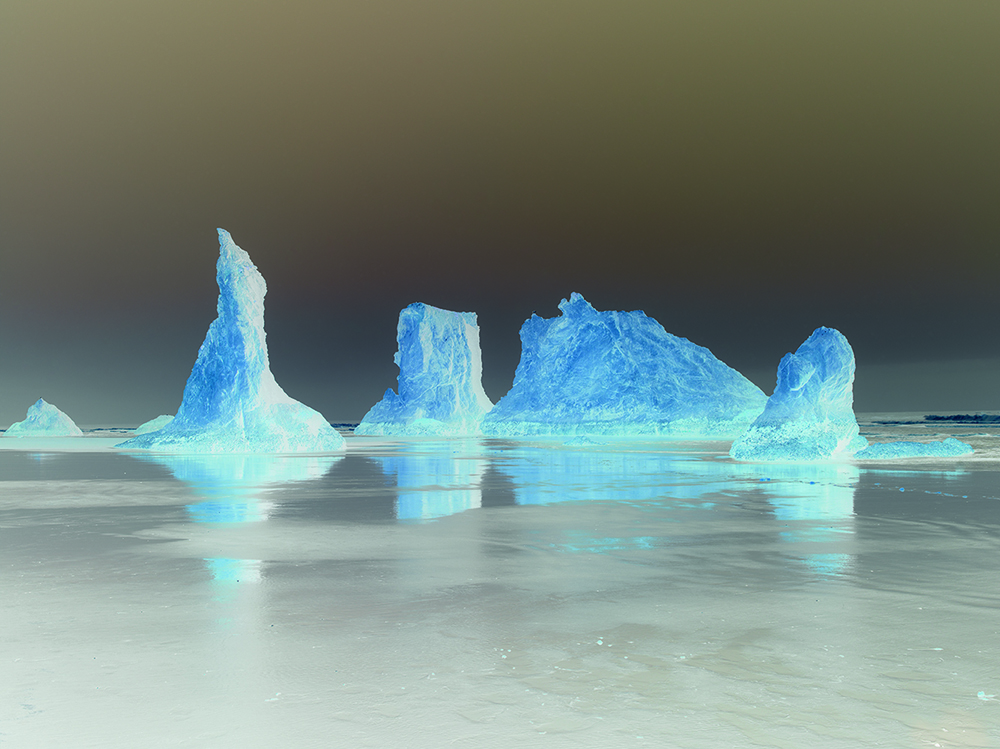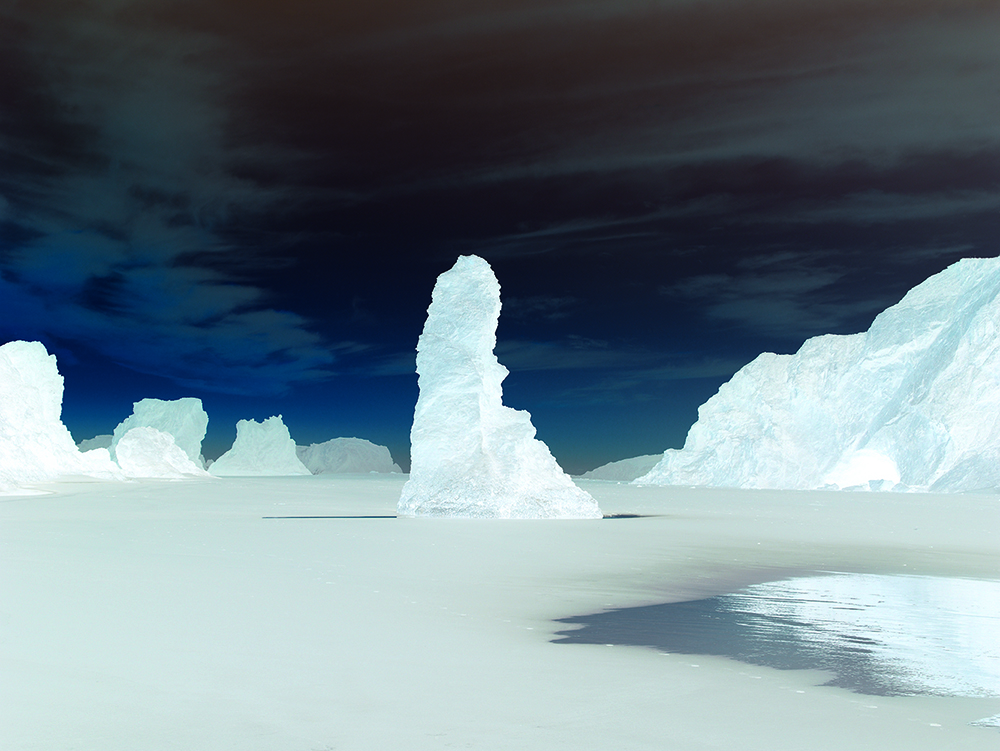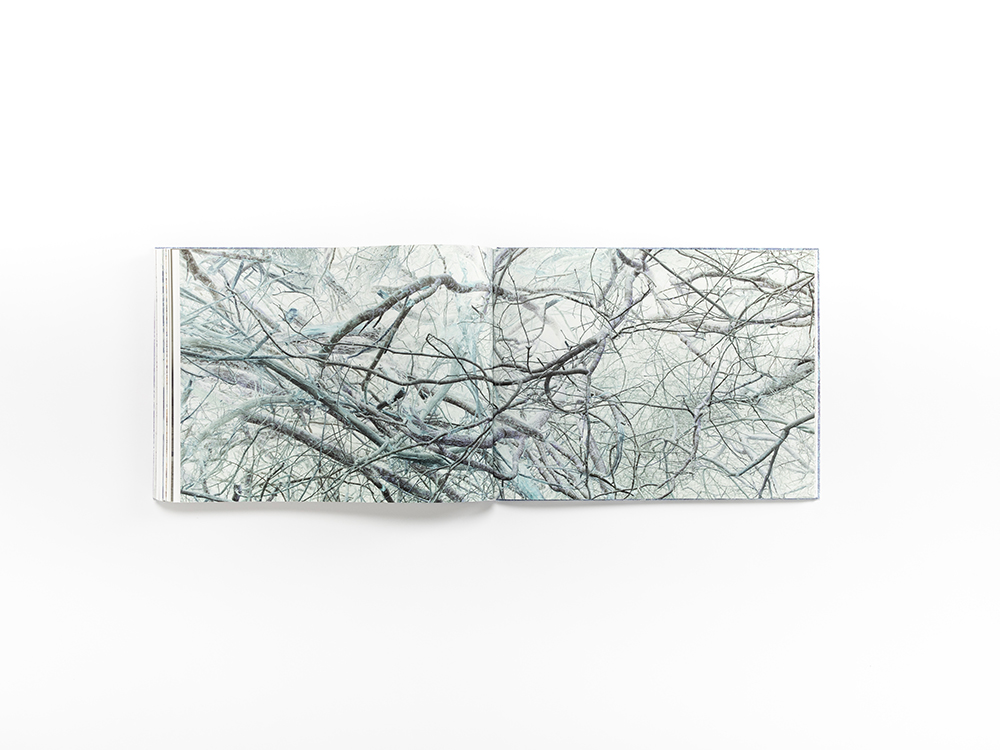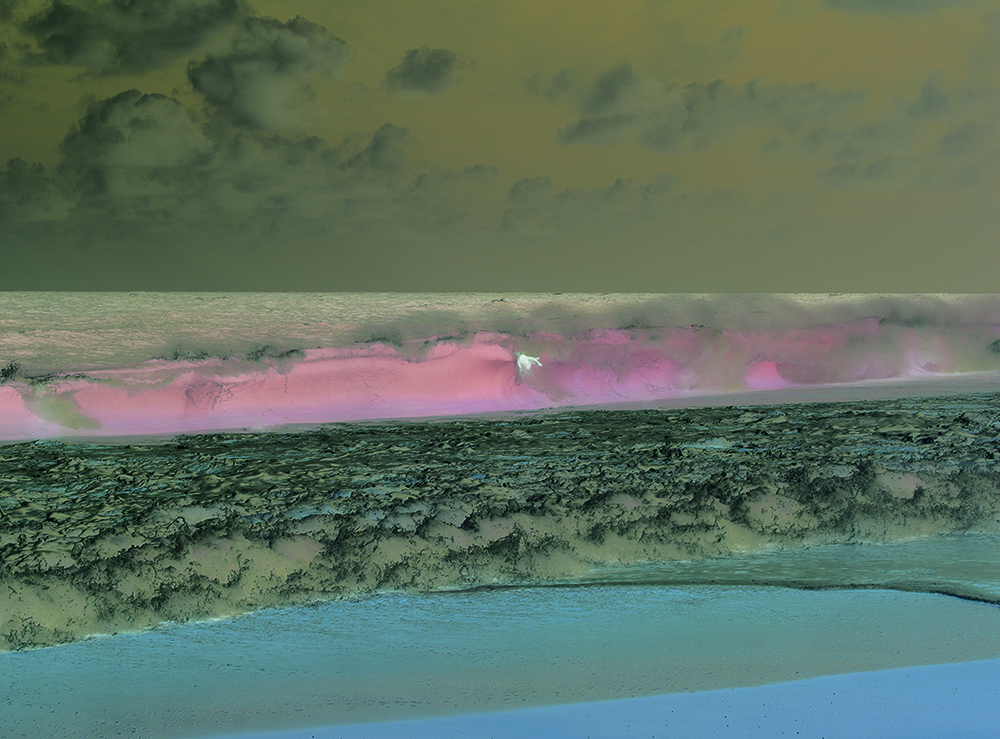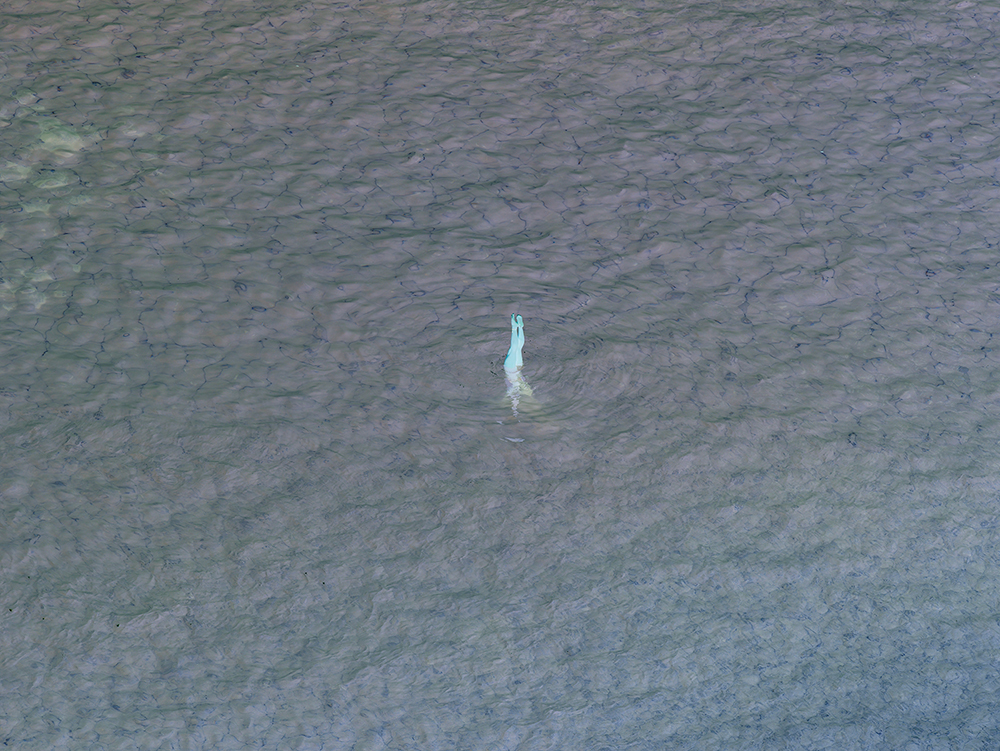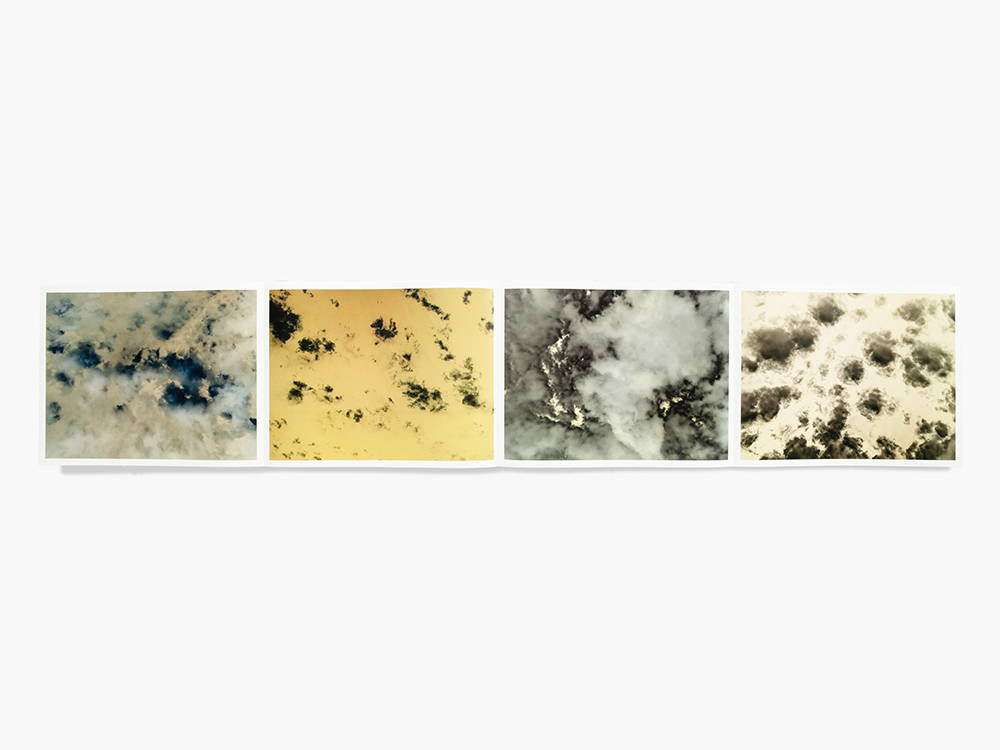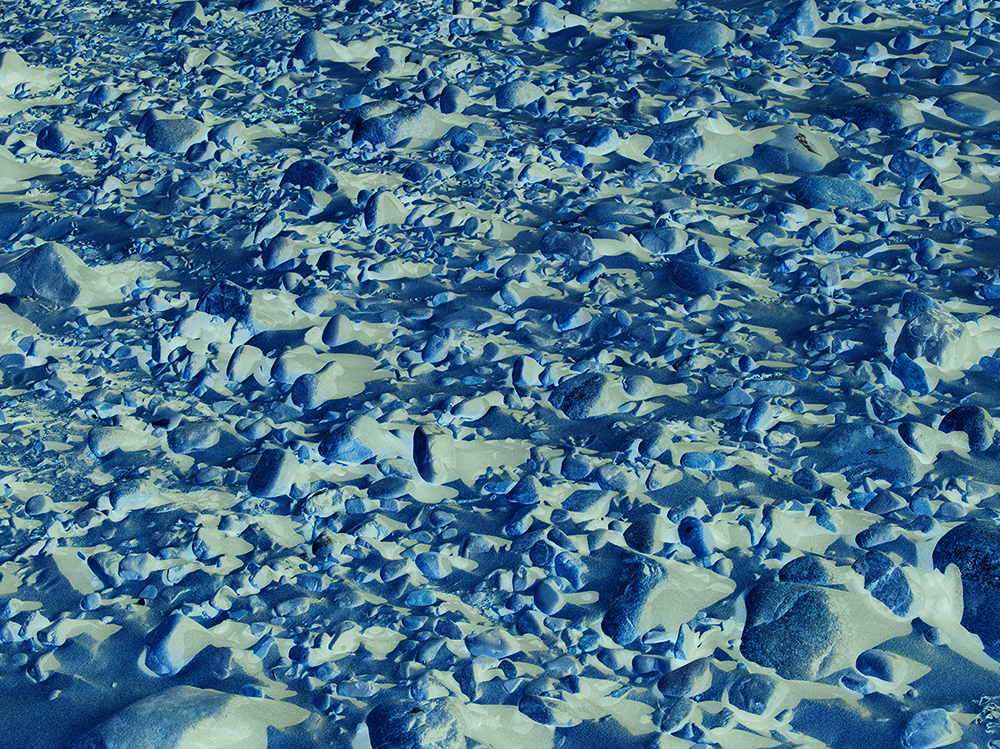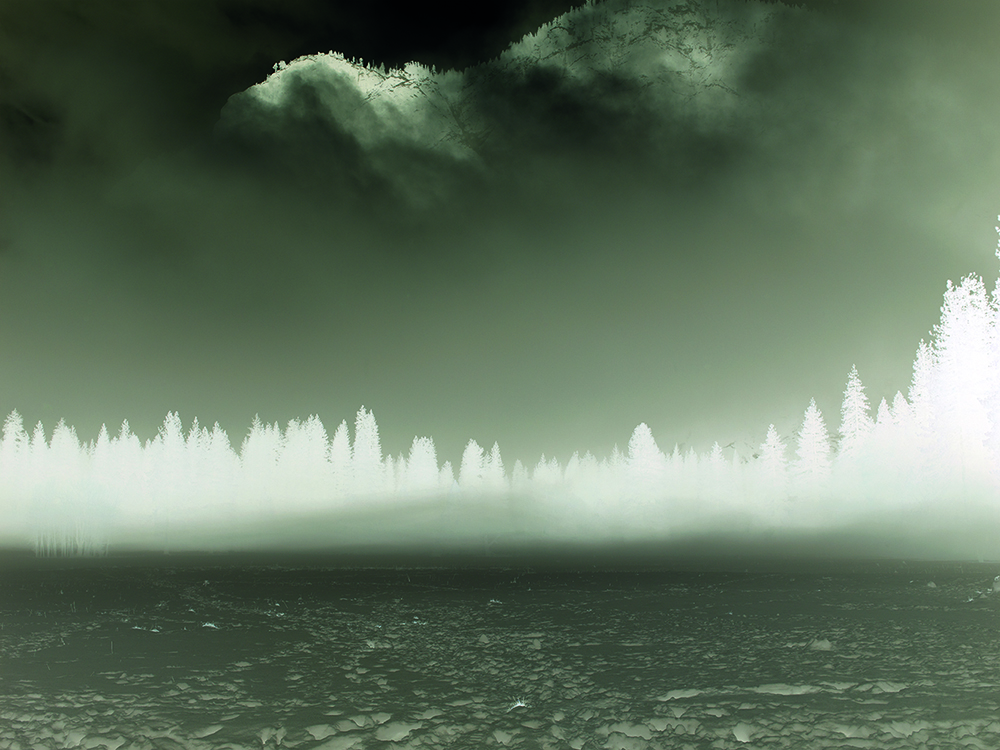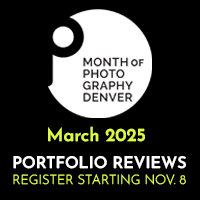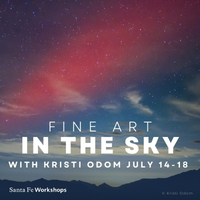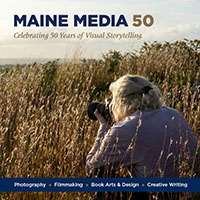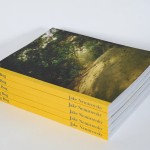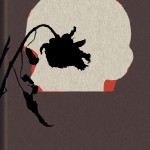Richard Misrach: Notations
Richard Misrach’s monograph Notations (Radius Books, 2022), is a collection of photographs spanning from 2006-2021. The beginning of this time frame corresponds with his shift away from analog film to working exclusively with a digital camera. In this book, Misrach explores the potential of the negative image, offering an alternate visual reality. Landscape transforms into otherworldly abstraction where formal elements of color, form, composition, shape, and line shift to the forefront of one’s vision. Figures become de-identified. The lack of familiarity in all aspects of these photographs offers a new way of looking at the world in which we live.
Evident in Notations is Misrach’s playful approach to photography, full of magic, surprise and discovery. Even the purple image selected for the book’s cover hints at the magic within. Crystal clear is Misrach’s love of photography in all aspects of the word, including an intriguing nod to its history.
Photography by Richard Misrach
Text by Darius Himes
Linda Alterwitz: Notations brings together photographs from 2006-2021. For many artists, selecting images from such a large period of time and editing them into a coherent collection can be very challenging. Can you please share how you begin this process and how you work through such an immense project?
Richard Misrach: It’s interesting how a project takes shape…it’s all about time and following one unexpected lead after another. You make some pictures, you print them, you look, perhaps 9 out of 10 don’t work. But one does. Why? You get intrigued and start thinking about that picture, and the next thing you know, you are generating more pictures like that one. Cousins. (Kind of like a family tree. Inside joke.) You exhaust that particular vein but suddenly you look back and you can see the trail taken. And in the meantime, looking ahead, you keep coming upon esthetic forks in the road. Some paths are dead ends, but others take you to new places. The excitement is palpable. After 15 years or so, you look back and have accumulated an unexpected epic body of work. Maybe it starts to feel like a coherent series, one with too many pictures to fit comfortably in a gallery setting. But a book, now that’s a means to show a lot of work in a cohesive package. A little old school trick I learned a half-century ago, and still use on every project: I get a $15 Strathmore drawing pad (a range of size from small to large) at the art store. I make small prints (8×10”-11”14” generally) of images I want to consider. I place them within the pages—without taping them down. I play with the sequencing and scaling. By having the loose prints, I can experience the way the images work together and easily moves them around. I generally come up with a sequence I like, then (very important) set the book dummy aside for a couple of months and move onto other projects. Then come back and walk thru the sequence with fresh eyes. Inevitably, I see some obvious changes, make them, and then voila, I have my book. I think the first dummy of Notations was made 3-4 years ago and was very different than this final version.
LA: As your negative color photographs are one step removed from straight photography, do you have any inclination toward moving two steps away from straight photography?
RM: Ha. No. I love the medium so much. I think it’s nothing short of magic the way it sucks the 3-dimensional world into a 2-dimensional image. That said, from the very beginning, from my “Pink Zen series” experiments, to work that I have made this last 2 years for the new 5 story UCSF Nancy Friend Pritzker Psychiatry Building. I have embraced experimental explorations into photographic imagery. All the images start with an image capture—whether initially on film, or digital—but from there I love exploring how that “realism” can be mediated in new ways…
LA: Photography is nothing “short of magic.” That’s an amazing phrase and I can completely relate to those words when viewing your collection of photographs in your new publication Notations. Can you expand more upon this element of “magic” within your work?
RM: Photography is simply one of those things, like the way our voices can travel thru a little object called a phone to someone else’s ear on the other side of the planet, or the way a bus full of people can lift into the sky, fly amongst the birds, and gently alight on the ground elsewhere across the globe. We call that an airplane. We take these remarkable human inventions for granted. Photography is no different—the ability to suck a two-dimensional image from our rich everyday three-dimensional world, to isolate a split second from the overflow of moments as a graphic image, which then can be enlarged to an 8×10 footprint for everyone/anyone to contemplate.
Even in its most pedestrian, mundane form, photography is remarkable. My wife has made a traditional family album of snapshots annually for 34 years. Every New Year’s Day we pull one out at random and look thru it—even the mostly lowly snapshot functions like a time-machine. It triggers memories and moments in a way no other medium can come close to.
Whenever I am working, I am always in awe of the process, the strange dance that I am part of….
Since 2006, coinciding with his shift away from analog film to working exclusively with a digital camera, Richard Misrach has been exploring the aesthetic possibilities of the negative image. His latest body of work, debuted in this deluxe, oversize (16.75 by 13 inches), landscape-format volume, comprises dazzling, sublime photographs of landscapes and natural scenes—in negative, but using color with great dexterity and nuance.
Inspired by Ansel Adams’ comparison of the photographic negative to a musical score, and John Cage’s 1969 book, Notations, which compiles music scores as art, Misrach here envisages the photographic image as a score-like negative, teetering on abstraction, that invites a diversity of interpretations. The result is a series of immense beauty unlike any previous Misrach publication.
Richard Misrach (born 1949) is one of the most influential photographers working today. For the past five decades, he has used visually stunning, large-scale color vistas to address human intervention in the natural world. He lives and works in Berkeley, California.
Posts on Lenscratch may not be reproduced without the permission of the Lenscratch staff and the photographer.
Recommended
-
Kathy Shorr: LimousineDecember 12th, 2024
-
Chance DeVille: Growing Tired of Calloused KneesDecember 5th, 2024
-
Dana Stirling: why am I sadDecember 1st, 2024
-
Michael Rababy: CASINOLAND: Tired of WinningNovember 29th, 2024
-
Kristin Schnell: Of Cages and FeathersNovember 26th, 2024


